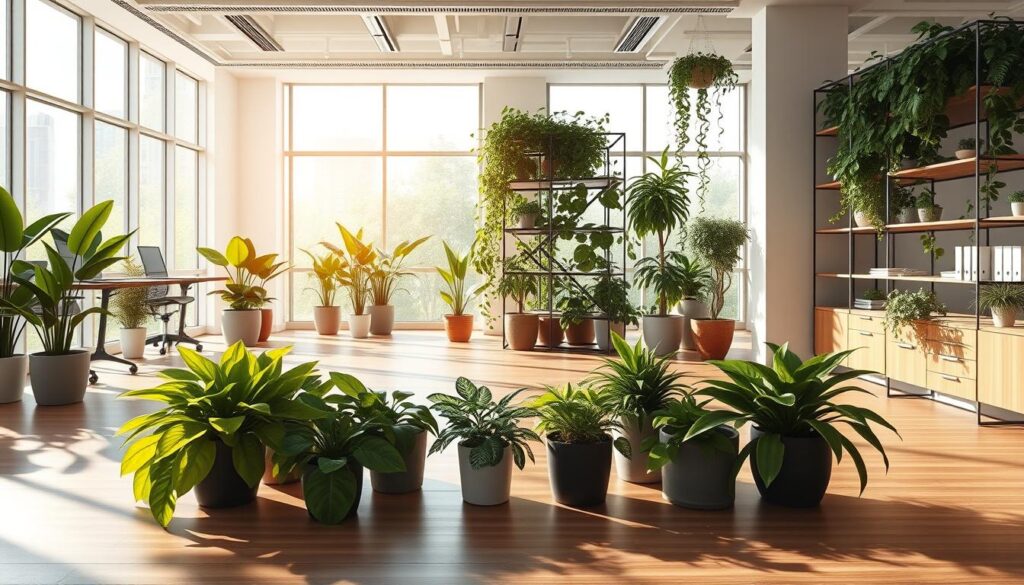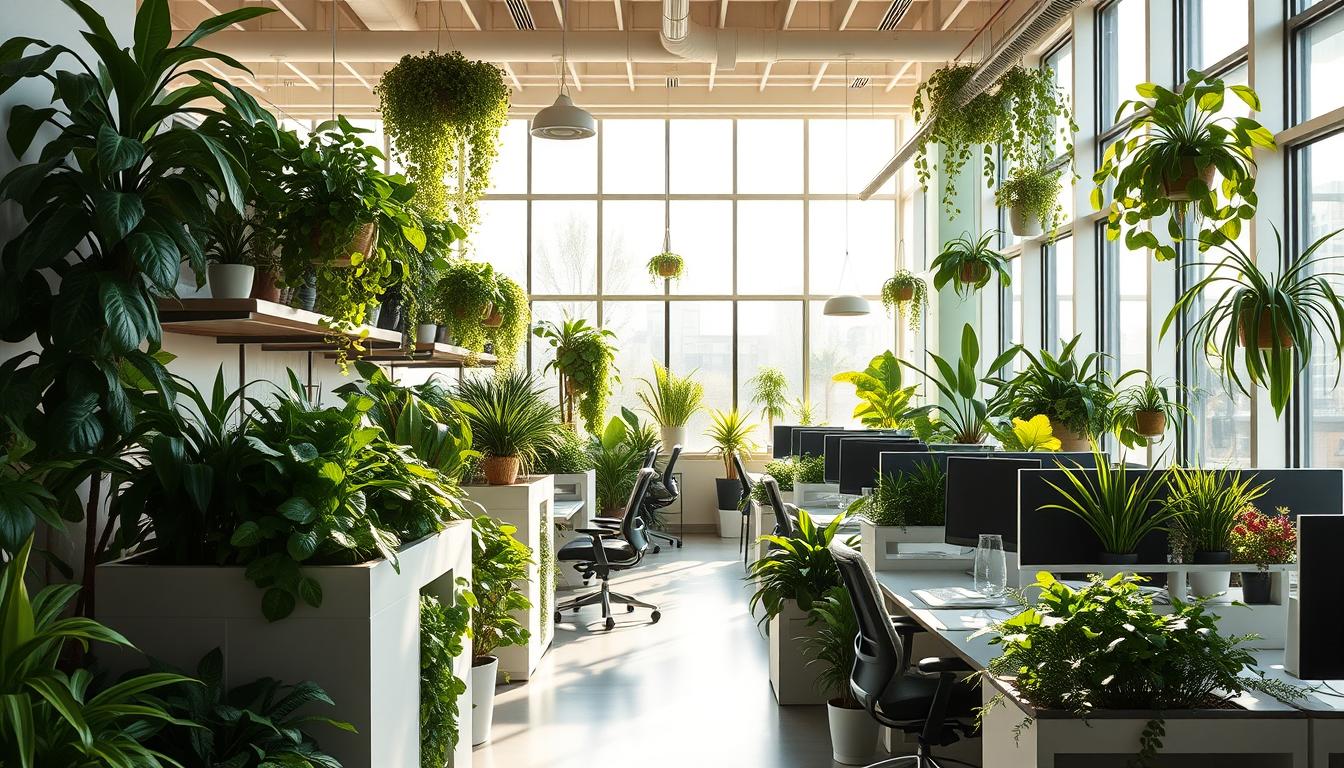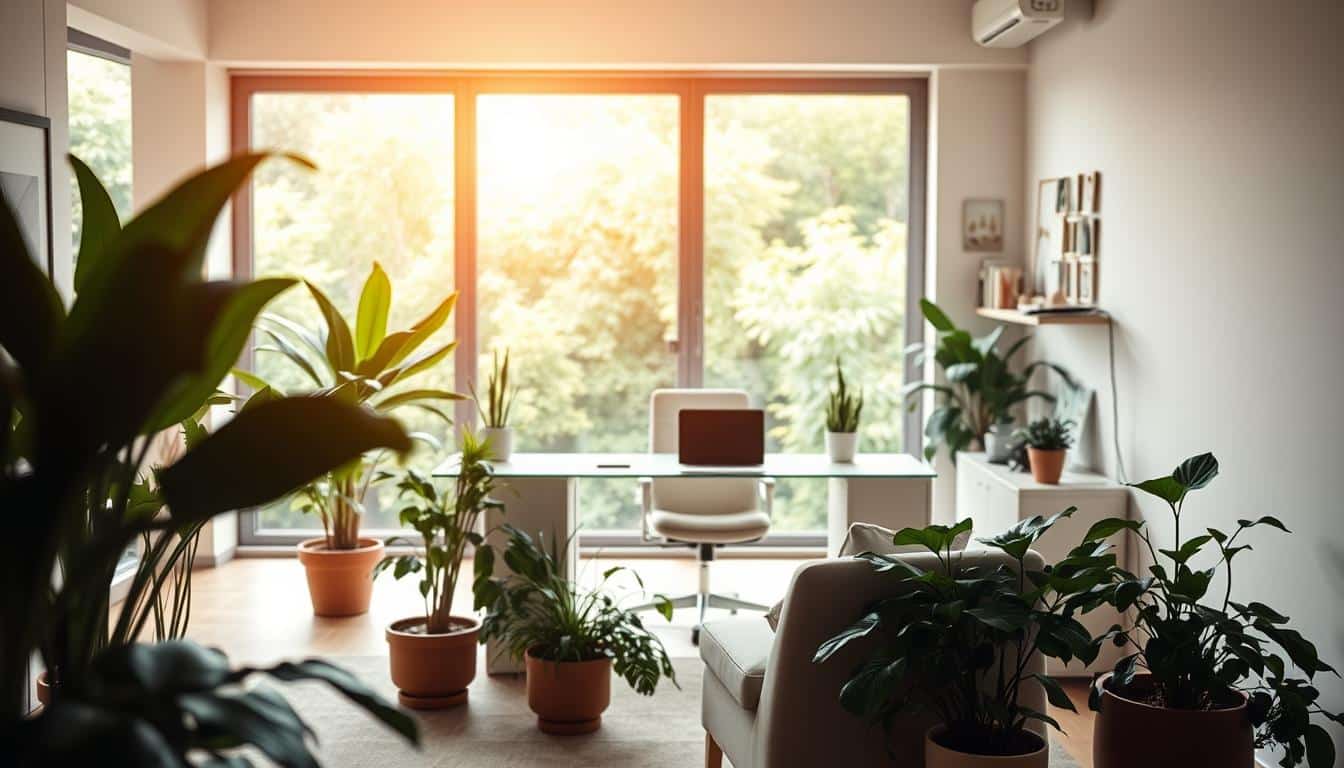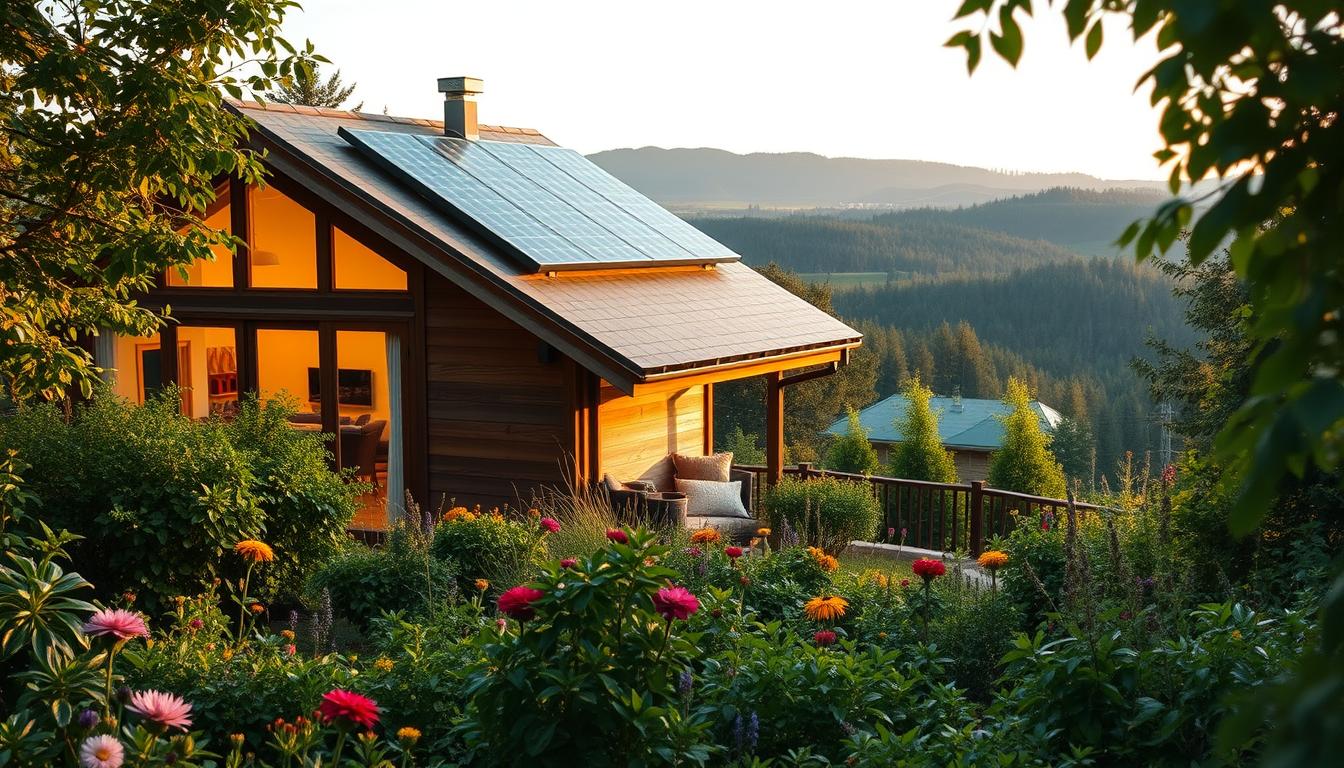The dynamic world of modern offices now embraces plant zoning as a key to better workspaces. By adding plants thoughtfully to office spaces, businesses create beautiful environments. This fosters employee well-being and boosts their performance.
Plant zoning focuses on setting up specific areas with certain plant types. This not only makes the space work better but also feels more welcoming. Delving into this concept shows us its role in making workspaces healthier and more efficient.
Understanding Plant Zoning in Modern Offices
Plant zoning means placing plants in an office space to make clear areas for different uses. It’s key in designing modern workspaces, making them look good and work better. By using plants, offices can clearly show where people should work together and where they should work alone.
Plant zoning makes workspaces better. It balances areas for group work and quiet spots for solo tasks. Adding plants makes the office more welcoming and can make employees happier. Studies have found that the right setup with plants leads to more work getting done and a nicer place to work.

Benefits of Integrating Plants in Office Spaces
Adding plants to office spaces brings many advantages. They make offices look better and help keep employees well. Studies show that plants improve air quality by removing harmful pollutants and toxins.
Plants also offer psychological benefits by making workspaces more pleasant. They help reduce stress and make employees happier. This leads to better work performance. Companies with lots of plants see less employee turnover. This suggests that people prefer working in greener, healthier spaces.
Plants make offices more welcoming and boost employee health. Having plants shows a company cares about its team’s well-being. By adding plants, businesses promote a healthy, productive work environment.
Improving Air Quality through Plant Zoning
Adding plants to office spaces makes the air better. Spider plants and peace lilies, among others, clean the air by removing toxins. Studies show these plants clear out pollutants, giving employees cleaner air to breathe.
By grouping plants in certain areas, or plant zoning, workspaces look better and feel closer to nature. This idea, called biophilia, helps employees enjoy better air and could make them more productive and happier.
Adding plants to offices helps by:
- Lowering air pollutants
- Making employees healthier and more comfy
- Creating a better work vibe
Placing plants wisely helps clear the air, making them a must-have in modern offices. Green spaces soothe us and improve air quality. This is crucial for keeping everyone motivated and working efficiently.
Enhancing Employee Productivity and Well-Being
Adding plants to the workplace makes both productivity and well-being better. Studies show that a green work environment helps people focus more. It lets them be more creative without getting distracted.
Plant zones in the office are good for many reasons:
- They help people relax and think clearly.
- They make the office look better, which makes people feel good.
- They lower stress, which is good for everyone’s health.
Studies say that plants in the office make people less tired and stressed. When there are more plants around, people work better and feel healthier. By making peaceful spots with plants, businesses help employees take a break and sharpen their focus. This is great for the company’s success.
Plant Zoning in Modern Offices: Best Practices
Effective plant zoning in modern offices needs good planning. It’s important to choose the right plants by looking at the work area’s needs. Think about how much light, space, and clean air each area needs. This helps pick plants that grow well and make the office better.
Choosing the Right Plants for Different Zones
Different office areas have different uses, so plant choice matters a lot. Keep these ideas in mind when picking plants:
- Choose lively plants for open areas to boost mood and support diversity.
- Pick easy-care plants for quiet spots to help keep the atmosphere peaceful.
- Make sure the plants fit well with the light in the area, whether it’s from the sun or lamps.
- For tight spaces, go for small plants or vertical gardens to save room but keep things green.
Creating Diverse Work Zones with Plants
Making different work zones with plants makes the office look nice and helps people work better together. Try these tips:
- Set up places for teamwork, chilling out, and intense focus. Use plants to highlight these areas.
- Bring in various plant types to keep things interesting and suit everyone’s taste.
- Use plants as natural barriers to split up different areas. This makes the office flow well and cuts down on distractions.
Current Trends in Office Plant Design
More companies are now using nature in office designs, following the biophilic design trend. This idea focuses on adding natural elements to work areas. It aims to make employees happier and more productive. A big part of this trend is adding lots of plants in office spaces.
Now, offices with lots of light and plants are becoming popular. They boost creativity and team spirit. Plants are not just for looks—they make the air healthier and help people work together better. Plants are being placed in shared spaces, meeting rooms, and desks for everyone to enjoy.
Businesses are also bringing the outdoors in. They are making spaces like rooftop gardens for employees to enjoy fresh air. These spots offer a peaceful break from work and help with mental health. Making offices that connect with nature is getting more common. It shows that thoughtful design with plants makes workspaces more enjoyable.
Implementing Flexible Workspaces with Plant Zoning
Creating a flexible workspace means more than moving desks around. Adding plants is key to making workspaces adaptable. Through smart plant use in the office, companies can create spaces that suit the changing needs of workers who split their time between home and the office.
Key strategies for adding plant zoning to flexible workspaces include:
- Using modular furniture that can be rearranged easily.
- Picking plants that are easy to care for and do well in offices.
- Creating areas for team work that look good and make people feel better with plants.
By focusing on design that’s easy to use and move, firms can make spaces that spark creativity and meet various work styles. This approach to flexible workspaces can lead to happier and more engaged employees.
Maximizing Small Office Spaces through Plant Utilization
Designing a small office comes with its own set of challenges. The aim is to make it inviting and efficient. Using plants smartly can boost both the look and the feel of a small space.
For saving space, vertical gardens are a top pick. Walls get a lively touch with mounted planters or green walls. Hanging planters work well too. They can be hung near windows or from the ceiling, keeping the floor space clear.
Selecting the right plants is key in small spaces. Go for ones that need less care, like succulents, pothos, and spider plants. These plants can make the air cleaner and lift everyone’s spirits, helping them feel more in tune with their environment.
Putting plants together in certain areas can help organize a small office. It gives the workspace its own personality. With the right plants and their smart placement, any small office can turn into a lively, green place.
Challenges in Plant Zoning Implementation
Plant zoning in offices faces challenges. One big issue is maintenance. Keeping plants healthy requires regular care. This can be hard for busy staff. Without a good maintenance plan, plants might not provide their benefits for long.
Choosing the right plants for different office spaces is tricky. Light and humidity levels affect which plants work best in certain areas. It is tough to pick plants that fit the space and grow well.
Employee allergies are another challenge. Some people might be allergic to certain plants. This can lead to discomfort. Companies should talk about plant choices with everyone. They might consider allergy-friendly plants to reduce problems.
Changing office layouts to include plants can meet resistance. It’s important to explain the benefits clearly to everyone. Asking for employee suggestions can help. This approach makes people more open to the idea and excited about adding greenery.
Successful Case Studies of Plant Zoning
Many companies have seen the benefits of plant zoning in their offices. These stories show different ways to use plants and the good changes they bring to workers.
Google’s New York City office is a great example of plant zoning. They made special areas for rest and teamwork. They used plants like snake plants and peace lilies. Because of this, the office looks better, the air is cleaner, and workers are happier.
Then there’s the design firm Gensler in California. They added nature into their office in smart ways. Because of this, their workers got more done. It shows that plants really do help people work better.
HSBC did something amazing with a green wall in their office. It’s in a place where everyone can enjoy it together. This green wall is not just nice to look at. It also helps employees feel better mentally. It proves that adding plants can change how an office feels.
These stories help us see how well plant zoning can work. They show us that the right plants can make workers feel and do better. Any company wanting a better office should think about using plants like these.
Conclusion
Adding plants to office spaces offers more than just good looks. It improves the air, makes employees happier, and boosts work output. These factors create a better place to work.
The future of office design includes more green spaces. They’re not just nice to have but are key for a good workspace. Companies that use plant zoning make working places that are healthy and inspire teamwork and new ideas.
So, companies should think about how to fit plants into their offices. Doing so makes the workplace lively, efficient, and green. This is great for both the staff and the company.



